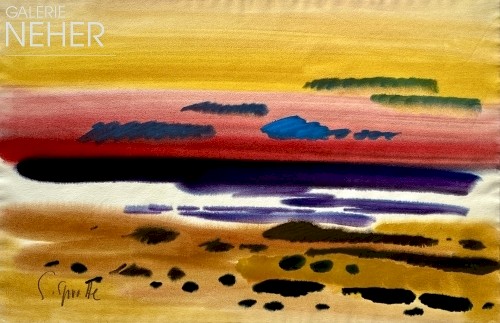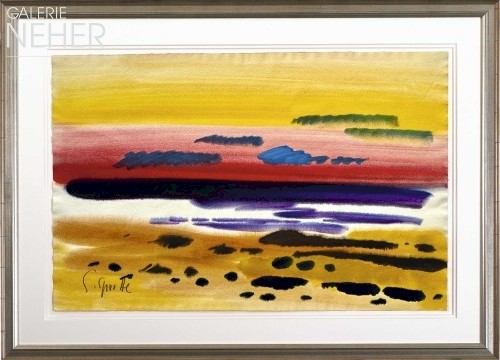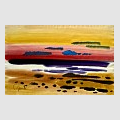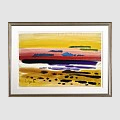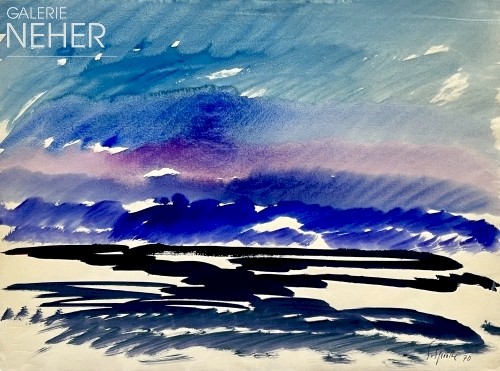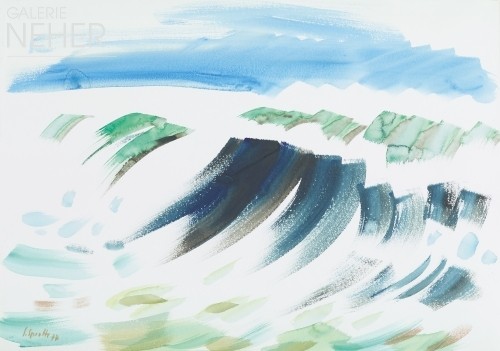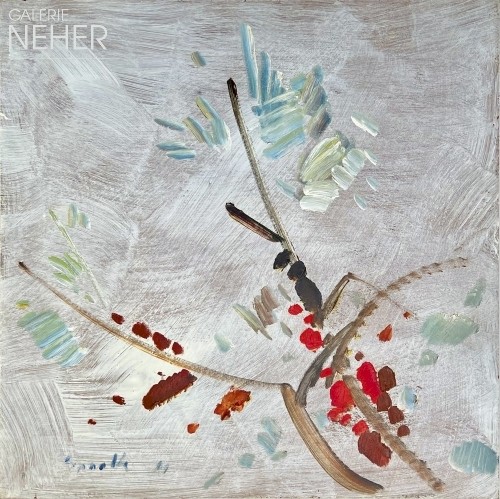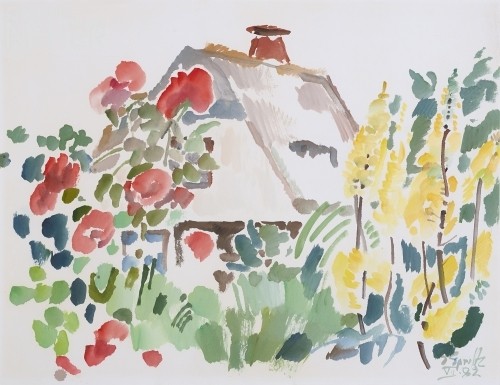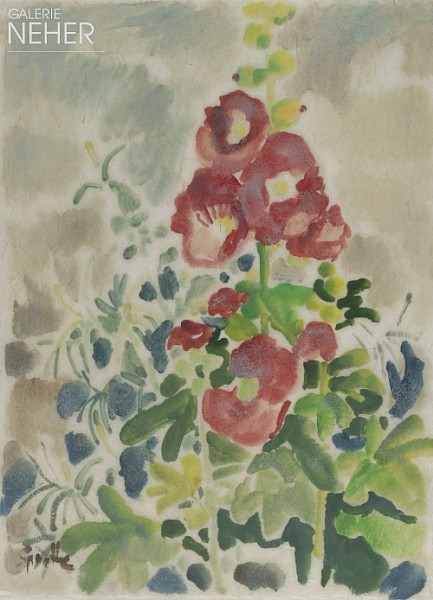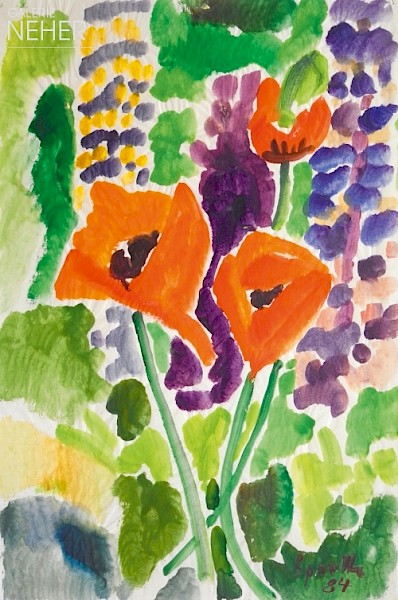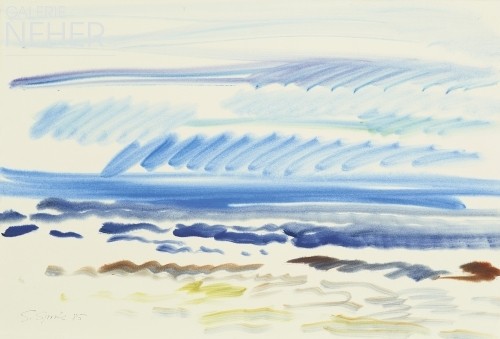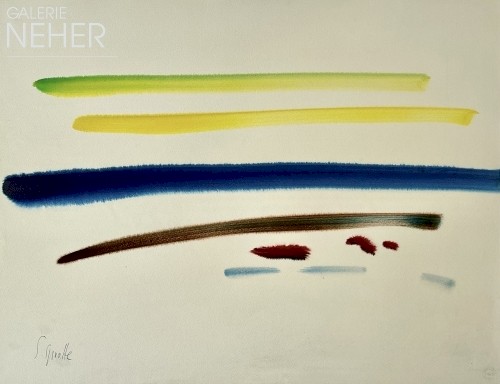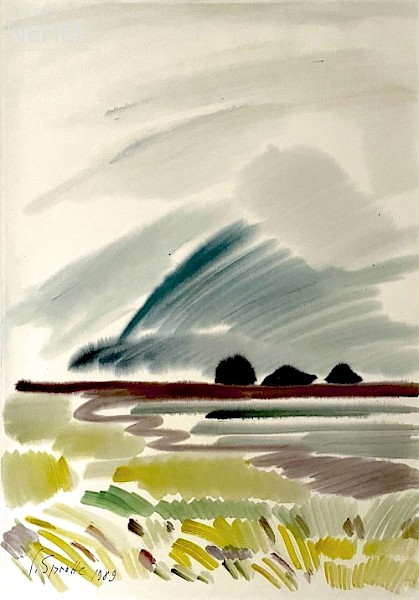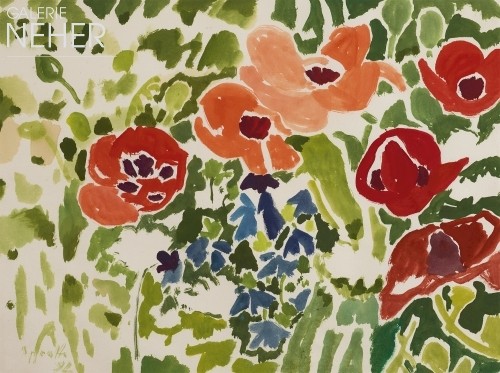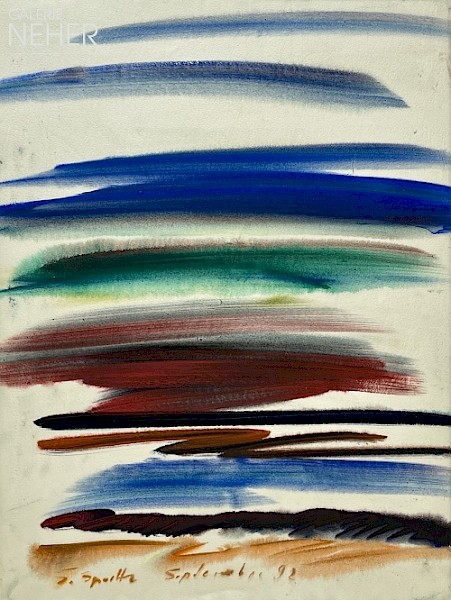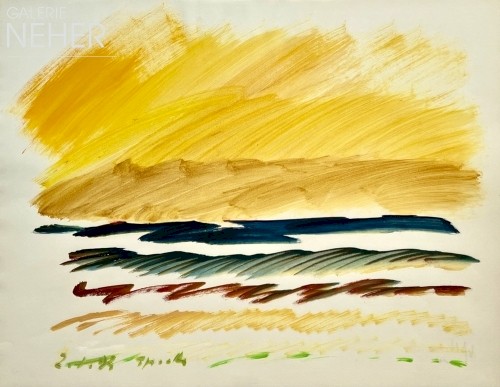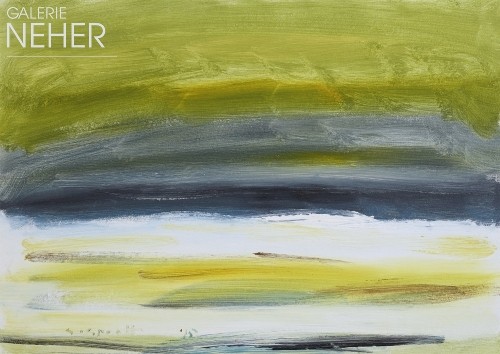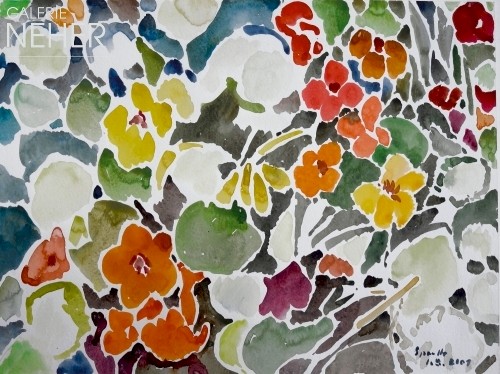Siegward Sprotte - Farbensprache (Colour Language), 1975
Gouache on handmade paper
43 x 65 cm / framed 60 x 84 cm
16 x 25 inch / framed 23 x 33 inch
Signed at bottom left: S. Sprotte
N 9466
8,800 €
Provenance:
Nachlass des Künstlers
Exhibitions:
Essen, Galerie Neher, Frühjahr 2022, Kunst aus dem 20. Jahrhundert, Katalog mit frabiger Abbildung Seite 37
Siegward Sprotte - Farbensprache (Colour Language), 1975
Gouache on handmade paper
43 x 65 cm / framed 60 x 84 cm
16 x 25 inch / framed 23 x 33 inch
Signed at bottom left: S. Sprotte
N 9466
8,800 €
Provenance:
Nachlass des Künstlers
Exhibitions:
Essen, Galerie Neher, Frühjahr 2022, Kunst aus dem 20. Jahrhundert, Katalog mit frabiger Abbildung Seite 37
About the work
From cave paintings through antiquity, the Renaissance and the Baroque to the Realism of the 19th century, European art history developed from a symbolic form of expression to ever more complex pictorial compositions. Outside of Europe, especially in the Arabic realm extending to East Asia, symbolic reductions continued to develop over the centuries. There, highly symbolic, reduced representations exist next to complex, narrative works imitating reality. Europe discovered the art of the Far East in the second half of the 19th century. Many artists oriented themselves directly to the art of the Orient. The interest of the young Siegward Sprotte in the art of East Asia, especially in calligraphy, was aroused in the context of intensive study of the aphorisms of the Chinese philosopher Laozi.
Sprotte did in fact intensively explore Chinese ink painting, but rigorously rejected the idea of merely representing a detail. Instead, he adopted the technique of reduction, of symbolic reproduction for his holistic representations of landscapes. The artist deployed his reduced pictorial language for the representation of larger contexts. The simplification of the pictorial means was the objective in the art of Siegward Sprotte. In this way he was able to reduce that seen to perfectly to such an extent that the greater whole was preserved and elucidated. In the few characters and brush strokes Sprotte used, he was able to allow the power of the whole to appear.
Text authored and provided by Dr Andrea Fink, art historian
The art historian, curator and freelance publicist Andrea Fink studied art history, cultural studies and humanities, modern history and philosophy in Bochum and Vienna. Doctorate in 2007 on the work of the Scottish artist Ian Hamilton Finlay. As a freelance curator and art consultant, her clients include, among others, the Kunstverein (art association) Ahlen, Kunstverein Soest, Wella Museum, Museum am Ostwall Dortmund, ThyssenKrupp AG, Kulturstiftung Ruhr, Osthaus Museum Hagen, Franz Haniel GmbH, Kunsthalle Krems, Austria.
